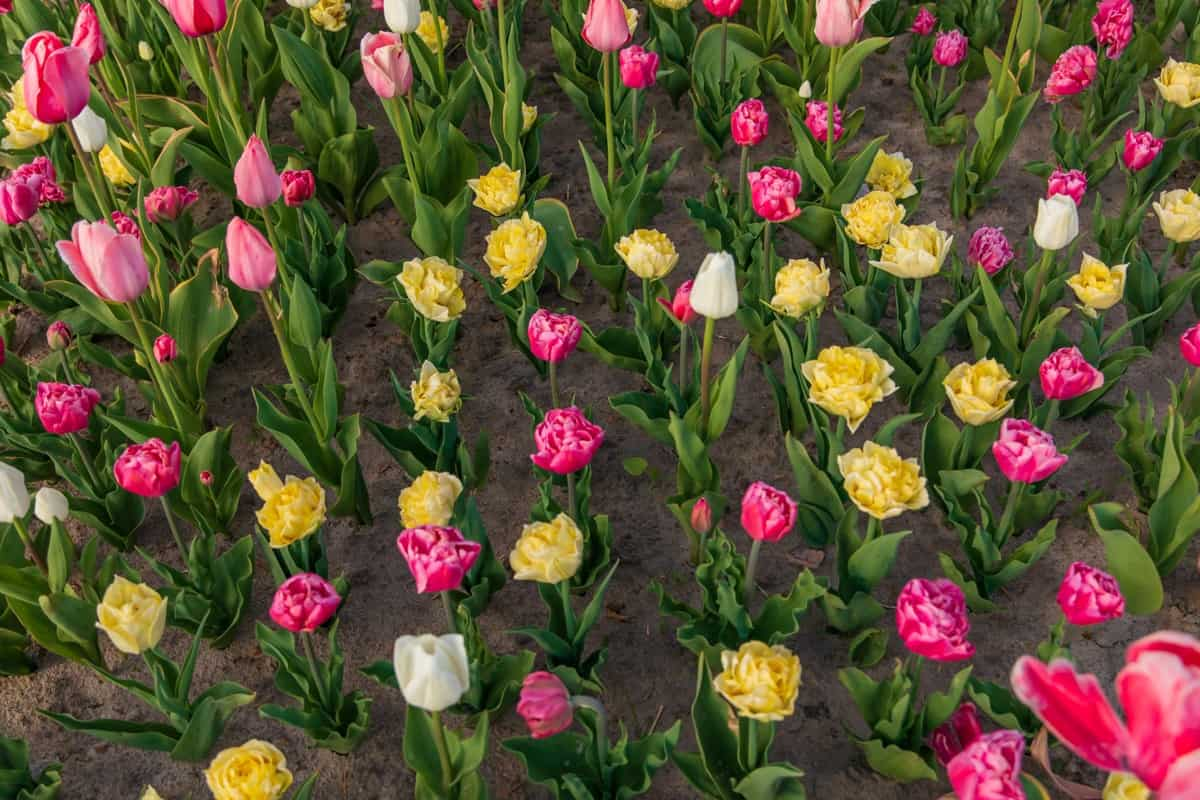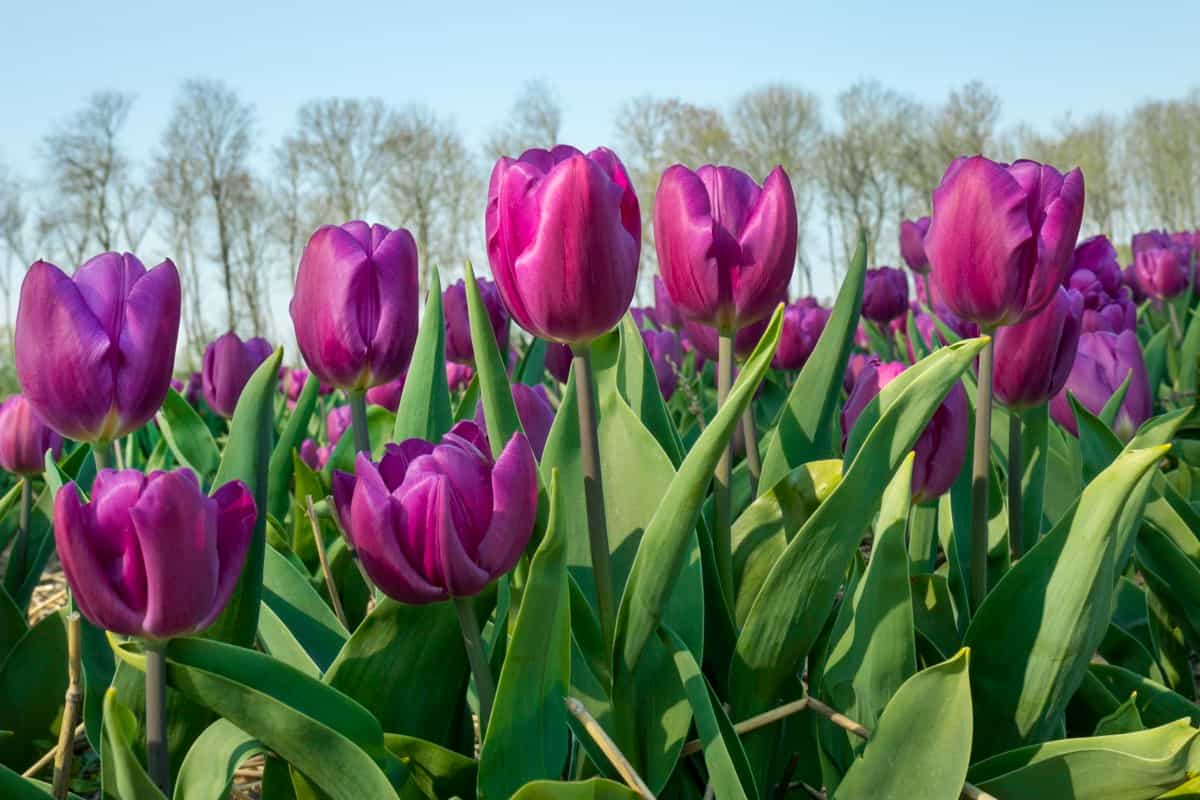In the beautiful state of Michigan, with its contrasting seasons, the act of planting tulips requires timing, knowledge, and a bit of patience. When it comes to understanding when to plant tulips in Michigan spring, there are many factors to consider. From understanding Michigan’s climate to its hardiness zones, this Michigan bulb planting guide will offer insights and clarity.

Gardeners often ask, “What month do you plant tulips in Michigan?” or “Can I plant tulips in the spring in Michigan?” These are valid questions, and understanding the optimal times for planting is essential. Whether looking at when to plant bulbs in Michigan in spring or seeking advice on how to plant tulip bulbs, this comprehensive guide has you covered.
When to Plant Tulip Bulbs in Michigan
Understanding the Climate and Hardiness Zones in Michigan
Michigan experiences diverse climatic conditions thanks to its location in the Great Lakes region. Generally, the state falls within USDA hardiness zones 4 to 6. These zones provide insights into how plants, including tulip bulbs, can withstand seasonal temperature variations. Depending on the specific region within Michigan, gardeners must adapt their planting practices to align with the local hardiness zone, ensuring that tulips have the best chance of thriving.
Factors to Consider Before Planting Tulip Bulbs in Michigan
Before embarking on your tulip planting journey, several crucial factors must be weighed. First, the location within the state plays a significant role. While certain areas might be well-suited for early spring planting, others might benefit from a late fall planting approach. It’s also essential to account for local microclimates, soil conditions, and potential pest threats. For example, a low-lying area might retain more moisture, affecting how and when you should plant your bulbs.
Optimal Timeframes for Planting Tulip Bulbs in Michigan
While many eager gardeners inquire about when to plant bulbs in Michigan in spring, the optimal time for planting tulip bulbs in most of Michigan is during the fall. Specifically, October is usually the best month. By planting in the fall, tulip bulbs experience a period of cold dormancy during the winter, which is crucial for their growth cycle. This dormancy period prepares them to bloom vibrantly when spring arrives.
Early Spring Planting: a Suitable Option for Michigan Gardeners
Though fall planting is recommended, spring planting is partially off the table. Can I plant tulips in the spring in Michigan? Yes, but with some caveats. If you’ve missed the fall window, consider planting in early spring as soon as the soil is workable. However, remember that tulips planted in spring may not bloom until the following year, as they require a cold dormancy period for optimal blooming.
In case you missed it: How to Grow and Care for Tulips: Planting Instructions

Late Fall Planting: An Alternative Approach for Michigan Tulip Bulbs
Another method is late fall planting, which allows tulips to establish roots before freezing temperatures. Though the time might be shorter than a full fall season, planting in late November or early December can still be effective if the ground isn’t frozen solid. This method is particularly beneficial if you didn’t catch the best opportunity in October.
The Importance of Soil Temperature for Successful Tulip Bulb Planting in Michigan
Regardless of the timeframe, the soil temperature plays a pivotal role in tulip bulb planting. Ideally, the soil should be around 55°F at planting depth. It’s essential to avoid extremely cold or warm soil conditions, as this can hamper bulb development. A simple soil thermometer can assist gardeners in ensuring the right conditions for their bulbs. Remember, even if the air feels chilly, the ground might retain warmth, so always check before planting.
Preparing the Soil: Essential Steps for Planting Tulip Bulbs in Michigan
How to plant tulip bulbs properly? Begin with soil preparation. Ensure a well-draining soil mix rich in organic matter. You can enhance your garden soil by adding compost or well-rotted manure. Aeration is also key, so make sure to till or turn the soil to a depth of about 12-15 inches, ensuring the bulbs have ample room to develop their roots. Incorporate bulb-specific fertilizer for added nutrients, and always ensure a planting depth of about three times the bulb’s height.
When Do Tulips Bloom in Michigan
After planting in the fall, expect your tulips to grace your gardens with their vibrant colors from late April to May. The specific blooming period can vary based on local climate conditions and the tulip variety chosen. Typically, in Michigan, the tulip bloom season is celebrated, with flowers providing a vibrant display against the backdrop of a Michigan spring.
In case you missed it: The Best Fertilizer for Tulips: When and How to Apply

Protecting Tulip Bulbs from Frost and Extreme Weather Conditions in Michigan
In Michigan, unpredictable weather can sometimes threaten delicate tulip bulbs. To protect your bulbs from frost and extreme conditions, consider mulching the soil with a 2-4 inch layer of organic material like straw, pine needles, or leaves. This not only insulates the soil, maintaining a more consistent temperature but also prevents excessive moisture accumulation, which can cause bulbs to rot. Additionally, during unexpected late spring frosts, consider covering the emerging shoots with a frost cloth or a blanket during the night and removing it during the day.
Tips for Properly Storing Tulip Bulbs Before Planting in Michigan
Storing tulip bulbs correctly ensures they remain viable and healthy before planting. First, choose a cool, dry, and dark place, such as a basement or a garage, where the temperature stays consistently between 35°F to 50°F. Put bulbs in a paper bag with holes for ventilation and to stop mold. Never use plastic bags, as they can trap moisture. Additionally, you can place the bags in a tray filled with dry peat moss or sand to absorb any excess moisture. Regularly check the bulbs during storage, discarding any that show signs of rot or disease.
Common Mistakes to Avoid When Planting Tulip Bulbs in Michigan
Planting tulip bulbs may seem straightforward, but there are pitfalls that Michigan gardeners should be wary of. One common mistake is planting bulbs too shallowly; ensure a depth of about three times the bulb’s height. Another error is not paying attention to the bulb’s orientation – the pointed end should always face upwards.
In case you missed it: Easy and Best Container Plants for Michigan: For Winter, Shade, and Full Sun (Summer)

Overwatering can lead to bulb rot, so ensure well-draining soil and water moderately. Also, avoid planting bulbs in areas with heavy foot traffic or where water accumulates. Lastly, don’t forget to consider spacing; overcrowding can result in stunted growth and poor flowering.
Conclusion
Whether you’re a seasoned gardener or a novice looking to bring color to your Michigan garden, understanding the nuances of tulip planting in the state is crucial. By adhering to the recommendations of this guide and paying close attention to local factors and soil conditions, you can ensure that your tulips bloom beautifully year after year.
- Feed Your Flock for Less: Top 10 Tips to Save on Chicken Feed
- Ultimate Guide to Ossabaw Island Hog: Breeding, Raising, Diet, and Care
- Hatching Answers: The Top 10 Reasons Your Chickens Aren’t Laying Eggs
- Eggs and Economics: Breaking Down the Cost of Raising Backyard Chickens
- Defend Your Greens: Proven Methods to Keep Iguanas Out of Your Garden
- Ultimate Guide to Cinnamon Queen Chicken: A Comprehensive Guide for Beginners
- Ultimate Guide to California Tan Chicken: Breeding, Raising, Diet, Egg-Production and Care
- Ultimate Guide to Marsh Daisy Chicken: Breeding, Raising, Diet, and Care
- 10 Types of Chicken Farming Businesses You Can Start for Profits